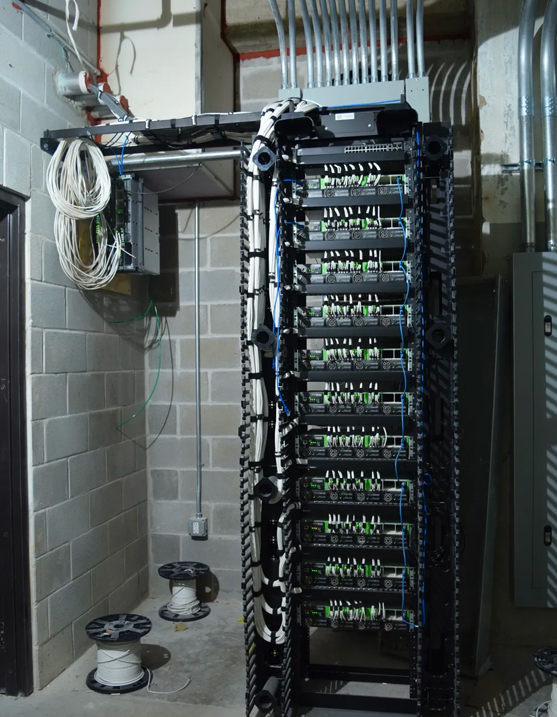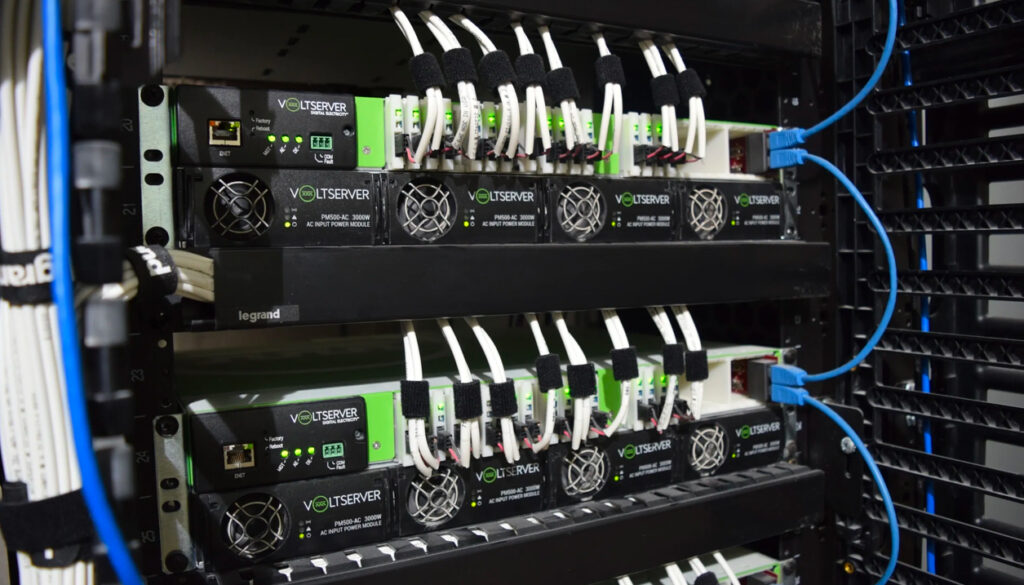Modern buildings are full of electronic devices which require both a power source and a data network connection. The quantity of these devices and our dependence on them are increasing rapidly. Standard practices have developed over the last 20 years for designing and installing network cabling for voice and data communications. These networks are now the backbone of the IoT devices that we take for granted.
Designers have come to understand the basic space requirements for Telecommunication Rooms (MDF or IDF) which are needed to house racks of networking equipment. Well, it might be time to forget about all of this. A growing number of buildings across the country are implementing a new design strategy that allows one single telecommunication room to serve an entire building. Imagine that. All IDF rooms in every wing of your building, on every floor, can go away. Imagine the value of that reclaimed space.
Class 4 Fault Managed Power Systems (FMP) are the technique that allows this to happen. Instead of traditional telecommunication system architecture, the FMPS design relocates the networking equipment, using low-voltage DC power distributed to the networking equipment at consolidation points located throughout the building, closer to the end users.
This represents a major deviation from standard design practices. Architects and engineers are known for following tried and true practices to avoid risks. So why would we want to embrace a new strategy like FMPS? As mentioned above, most of the building area that would traditionally be dedicated to telecommunication equipment can be omitted or utilized for another purpose. Furthermore, the cost of the data network cabling system may be reduced by up to 40%.
A recent San Antonio, Texas project utilized Class 4 FMP to save space and reduce construction costs. The two-story, 25,000-square-foot building serves as the headquarters of a national non-profit organization. One telecommunication room of 100 square feet serves the entire building.


The Sinclair Hotel Telecommunication Room (IDF) | Fort Worth, Texas | Courtesy of Sinclair Digital
How does it work?
From the MDF, hybrid FMPS power/data fiber optic cables are routed to the “consolidation points” located throughout a building, providing power and data close to networked devices. The result is a simplified, scalable network that can dramatically reduce the time, cost, and complexity of supporting connected devices, within buildings and across campus networks. The centralized design of the FMP solution makes it easy to back up and provides ultimate flexibility for larger venues, unique locations, and places where conduit is challenging to install.
Some of the most significant benefits of FMP include:
- Less floor space required for telecommunication equipment: This means your building footprint can be smaller, or space can be used for other purposes. This can reduce construction costs or increase rentable areas.
- Simplified installation requirements: Class 4 FMP can be handled and installed safely by the data network cable installers. Electricians are not required to route conduit and wire to power network equipment. This significantly reduces the scope and cost of electrical work.
- Flexibility: It is easy to modify, move, or add network equipment. Little or no downtime is required to make changes to the network configuration. This is ideal for office, laboratory, or classroom environments where frequent changes in use are expected.
- Sustainability: The features of Class 4 FMP systems which reduce installation costs also result in a smaller carbon footprint. Avoiding the construction of telecommunication rooms can reduce the quantity of construction materials required. Eliminating electrical conduits and wires for network devices also reduces material use significantly. DBR recently estimated the material savings of FMPS vs. traditional design in a 10-story office building. We estimated that, in addition to eliminating two telecommunication rooms per floor, the total amount of copper would be reduced by 4,348 lbs. (59%), and the total amount of plastic would be reduced by 8,226 lbs. (65%). The estimated labor required to install just the network cabling system would be reduced by over 2,000 hours.
Now, you’re probably thinking “This sounds good, but I don’t want to take a chance on an unproven technology.” The 2023 National Electric Code added Class 4 FMP. In some jurisdictions, fault managed power may not be accepted until the 2023 NEC is adopted. Meanwhile, the technology has been installed in buildings across the U.S. including office buildings, schools, hotels, industrial facilities, and even the Hard Rock Stadium in Miami Gardens, Florida.
If you would like to learn more about fault managed power systems, please reach out.

